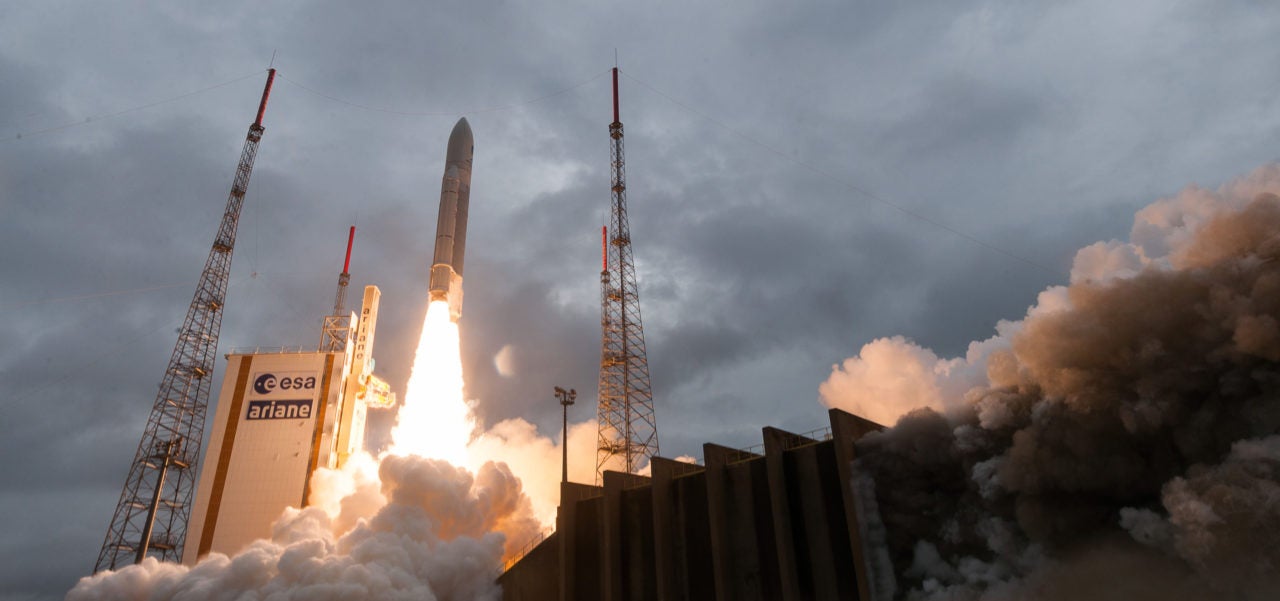Ariane 5 Logs 82nd Successful Mission with Galileo Launch

An Ariane 5 vehicle lifts off carrying four Galileo satellites on Dec. 12, 2017. Photo: Arianespace.
Arianespace has successfully launched satellites 19, 20, 21 and 22 in the Galileo constellation, using an Ariane 5 heavy launcher on behalf of the European Commission and under a contract with the European Space Agency (ESA). The launch took place on Dec. 12 from the Guiana Space Center (CSG), Europe’s spaceport in French Guiana.
Arianespace has now orbited a total of 22 Galileo satellites, using Soyuz and Ariane 5 launchers. The launch provider will orbit four more Galileo satellites in 2018 using an Ariane 5, then Ariane 6 will take over in 2020 and 2021. This mission marked Arianespace’s 11th and final for 2017. In September, the European Commission and ESA chose to continue deployment of Galileo satellites with two Ariane 62 launches, making them the first customers for Ariane 6.
Galileo is Europe’s own Global Navigation Satellite System (GNSS). Under civilian control, Galileo offers high-precision positioning around the world. Its initial services began in December 2016, allowing users equipped with Galileo-enabled devices to combine Galileo and GPS data for better positioning accuracy. The complete Galileo constellation will comprise a total of 24 operational satellites, including two spares.
Following this week’s launch, the European GNSS Agency (GSA), in charge of managing and operating the European Geostationary Navigation Overlay Service (EGNOS) and Galileo satellite navigation systems for the European Union (EU), will be responsible for operating these satellites as soon as they separate from the launcher. Satellite positioning operations and system operation will be carried out in conjunction with ESA.
This year, Arianespace launched a sum of 20 satellites for 18 different customers, with total weight injected into orbit of nearly 60 metric tons, including 53.8 metric tons just for satellites sent into Geostationary Transfer Orbit (GTO).